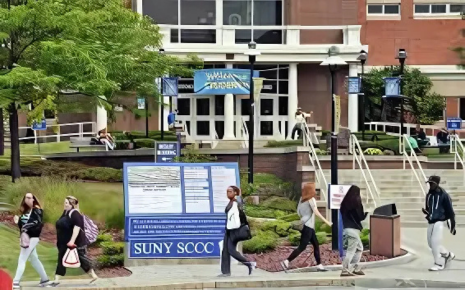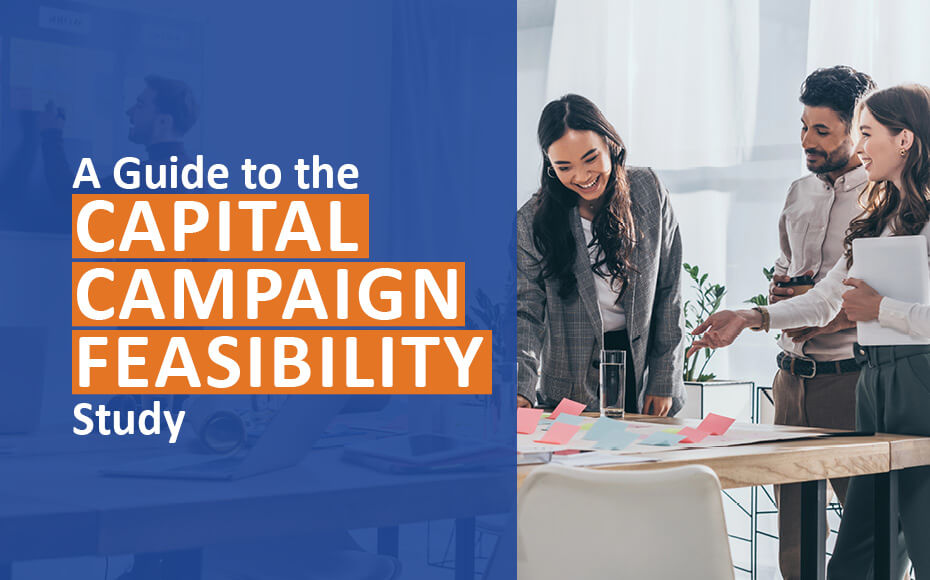Nonprofits are used to working on a budget even when running major fundraising initiatives, like a capital campaign. As a result, most nonprofits rely on a handful of trusted volunteers to help support their campaigns.
However, volunteer leaders’ responsibilities for a capital campaign differ significantly from those of supporters helping out at a typical fundraiser. Before starting a capital campaign, it’s vital to know what to look for in a volunteer and what impact you can expect them to have on your campaign. Explore the following ways volunteers can positively impact your campaign, so you know how to best leverage these supporters.
Confirm your campaign readiness.
Your earliest volunteers will likely come on board prior to your feasibility study. Capital campaigns involve forming numerous committees, including your feasibility study committee, which usually consists of the following individuals:
- Executive director
- Development director
- 3 to 4 board members
- 1 to 2 experienced campaign volunteers
Note the keyword “experienced.” Volunteers for your capital campaign shouldn’t just be the first supporters to sign up. Instead, these individuals should have extensive knowledge of and experience working with your nonprofit. Additionally, to help engage major donors—or as Convergent Nonprofit Solutions refers to them, investors—in your campaign, these first volunteers might also be major campaign contributors.
During the feasibility study itself, your volunteers will help the rest of your committee organize the study by:
- Assessing your case for support and campaign goal. Ultimately, feasibility studies test a specific case for support and fundraising goal to ensure your capital campaign plan is sustainable, likely to inspire investors, and possible to achieve in your given time frame. If your volunteers are major campaign investors, they can use their own experiences giving to your nonprofit to determine if your case for support would appeal to them.
- Identifying individuals to be interviewed during the study. Using their knowledge of your nonprofit’s community, your committee will recommend key individuals to question about your campaign. In some cases, this may even be the volunteers themselves due to their experience working on similar campaigns. That said, it’s best not to recruit volunteers for the committee before the feasibility study, as you want them to feel free to speak openly during the interview. But afterward? If they show enthusiasm and alignment with the campaign’s goals, inviting them onto the committee is a smart move.
- Reviewing the report before presenting it to your board. Whether your committee worked with an external consultant, did the study themselves, or completed a guided study, they will need to participate in presenting the findings to the board.
Additional volunteers will join your other capital campaign committees, but at these initial stages, a few trusted volunteers can be essential in establishing your campaign’s general direction.
Help cultivate community buy-in.
Your volunteers should be influential and trusted members of your community. When they join up with your nonprofit, it should signal to other stakeholders that your capital campaign is a professional, promising endeavor.
To help improve community buy-in, your volunteers might:
- Serve as committee members. As mentioned, volunteers can be valuable committee members. In addition to serving on your feasibility study committee, volunteers will be part of your steering committee, nucleus fund committee, kick-off committee, community gifts committee, post-campaign planning committee, and any other ad hoc committees your specific campaign may need.
- Make lead gifts. When well-known volunteers make major investments in your capital campaign, they signal to other investors that your nonprofit is a trusted organization with a viable campaign plan. This can persuade cautious investors to come on board.
- Be featured in campaign communications. Volunteers with strong speaking and communication skills can help you present your campaign to both individual investors and the general public.
Ultimately, respected volunteers can help your campaign generate valuable social proof. By publicizing their involvement with your campaign, they signal that your organization is legitimate and a worthwhile investment, persuading other supporters to join.
Facilitate introductions and help with asks.
During the quiet phase of your capital campaign, your nucleus fund committee will primarily be responsible for securing major gifts, and this committee should consist of your best volunteer solicitors. These individuals will help your nonprofit connect with major investors and even solicit gifts.
To ensure volunteers can connect your nonprofit with high-value major giving prospects and secure gifts, you should:
- Recruit volunteers with strong networks. Your volunteers should have extensive networks full of potential investors. With these connections, volunteers can facilitate warm introductions or even handle investor relationships on your nonprofit’s behalf.
- Provide volunteers with campaign talking points. Your volunteers put a friendly, familiar face on your nonprofit’s campaign, but almost all investors must understand the hows and whys behind your project before contributing. Prepare a cheat sheet of your campaign’s main talking points that volunteers can use when approaching investors.
- Ensure they have the proper background knowledge on investors. Volunteers who are strong solicitors can help you form relationships with and make fundraising appeals to all of your investors, not just the ones they personally know. Conduct prospect research on all prospective investors ahead of time and provide relevant details to volunteers tasked with cultivating them.
During the public phase of your campaign, volunteers will still help with fundraising. Specifically, your community gifts committee will engage with supporters of all giving levels to solicit campaign donations.
Keep your campaign on track.
Capital campaigns often span multiple years. This means that when planning your campaign, you need volunteers who are willing to make a long-term commitment and have the necessary skills to keep your campaign moving forward.
Your volunteers can help maintain your campaign’s momentum by:
- Assisting staff in monitoring progress. Capital campaigns have many moving parts, and volunteers can help your staff keep everything on track. Whether overseeing logistics or following up with investors, volunteers can continually help progress your campaign even if they’re part of a committee that only meets a few times a year.
- Contributing to various committees. We’ve touched on a few types of committees volunteers may be part of. Between these and other committees, your volunteers will likely have a wide range of tasks, from marketing to stewarding investors. Throughout your campaign, your volunteers’ efforts will help reduce the burden on your staff, allowing them to balance leading your campaign and completing their day-to-day responsibilities.
- Shaping internal campaign culture. Volunteer leads can help set the tone for the rest of your team, especially other volunteers. When bringing on volunteers, ensure you choose individuals who are not only experienced with capital campaigns and have strong networks but who are also passionate individuals you can rely on.
Regularly thank volunteers for their efforts to keep them motivated throughout your campaign. Volunteers donate their time because they believe in your cause, and you should show them the same respect and appreciation by providing them with the tools they need to succeed, listening to their feedback, and sending personalized thank-you messages.
Volunteer leaders can impact every part of your capital campaign from your initial feasibility study to your post-campaign wrap-up. Set your nonprofit up for success by recruiting skilled, dedicated individuals who are ready to make both financial and time contributions. Then, celebrate their accomplishments so they know they are a valued part of your team and see your campaign through to its conclusion.






